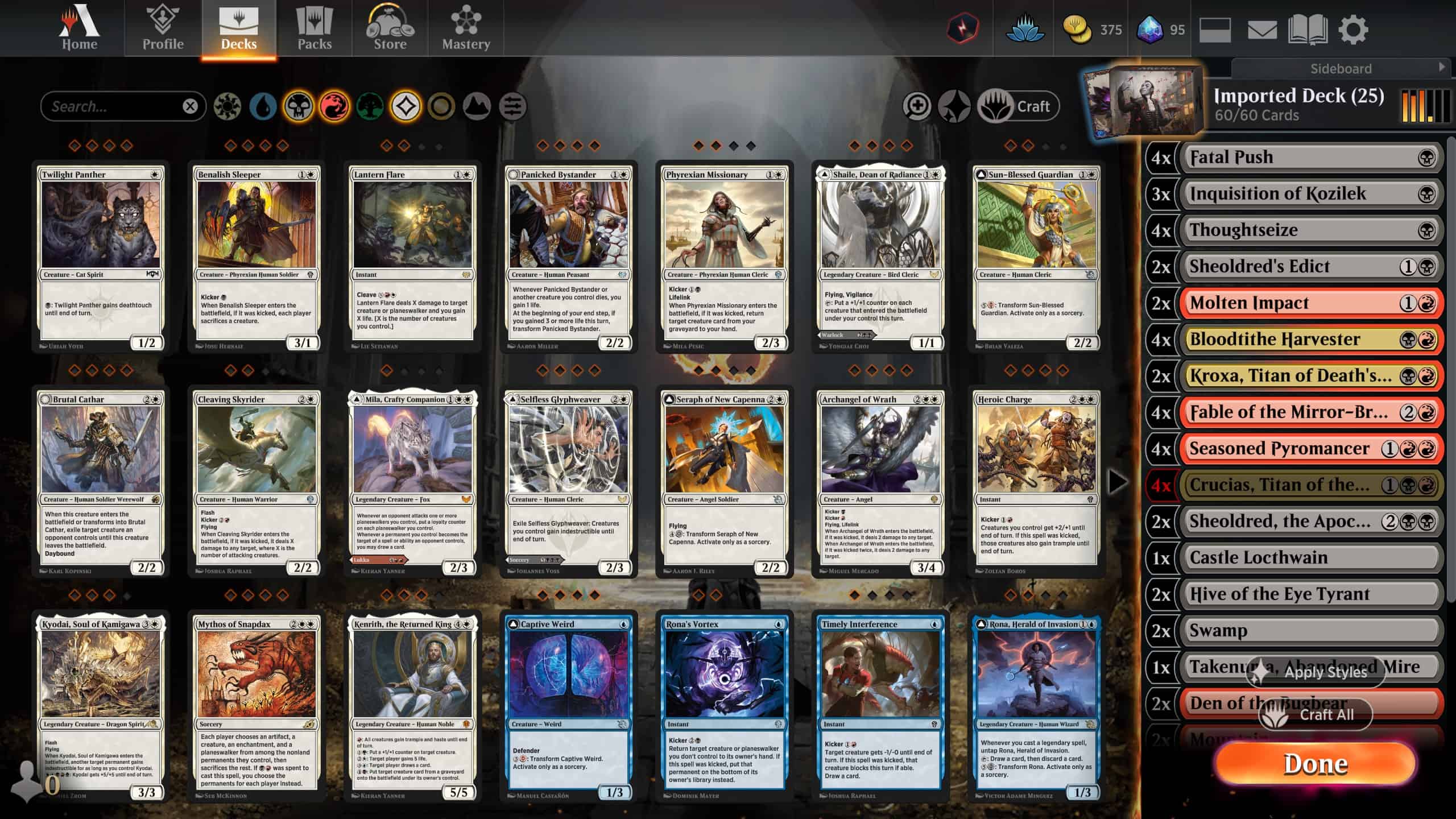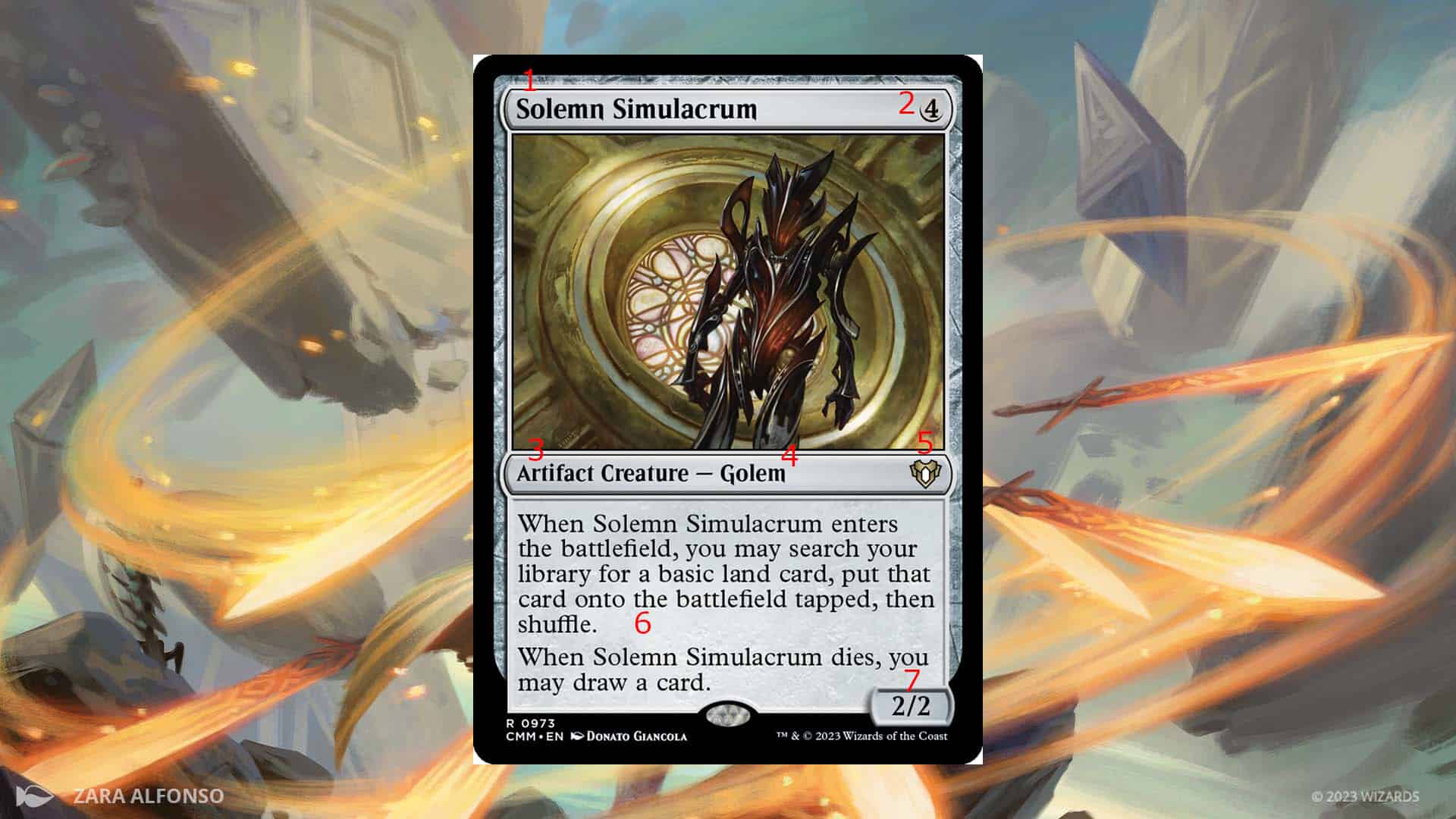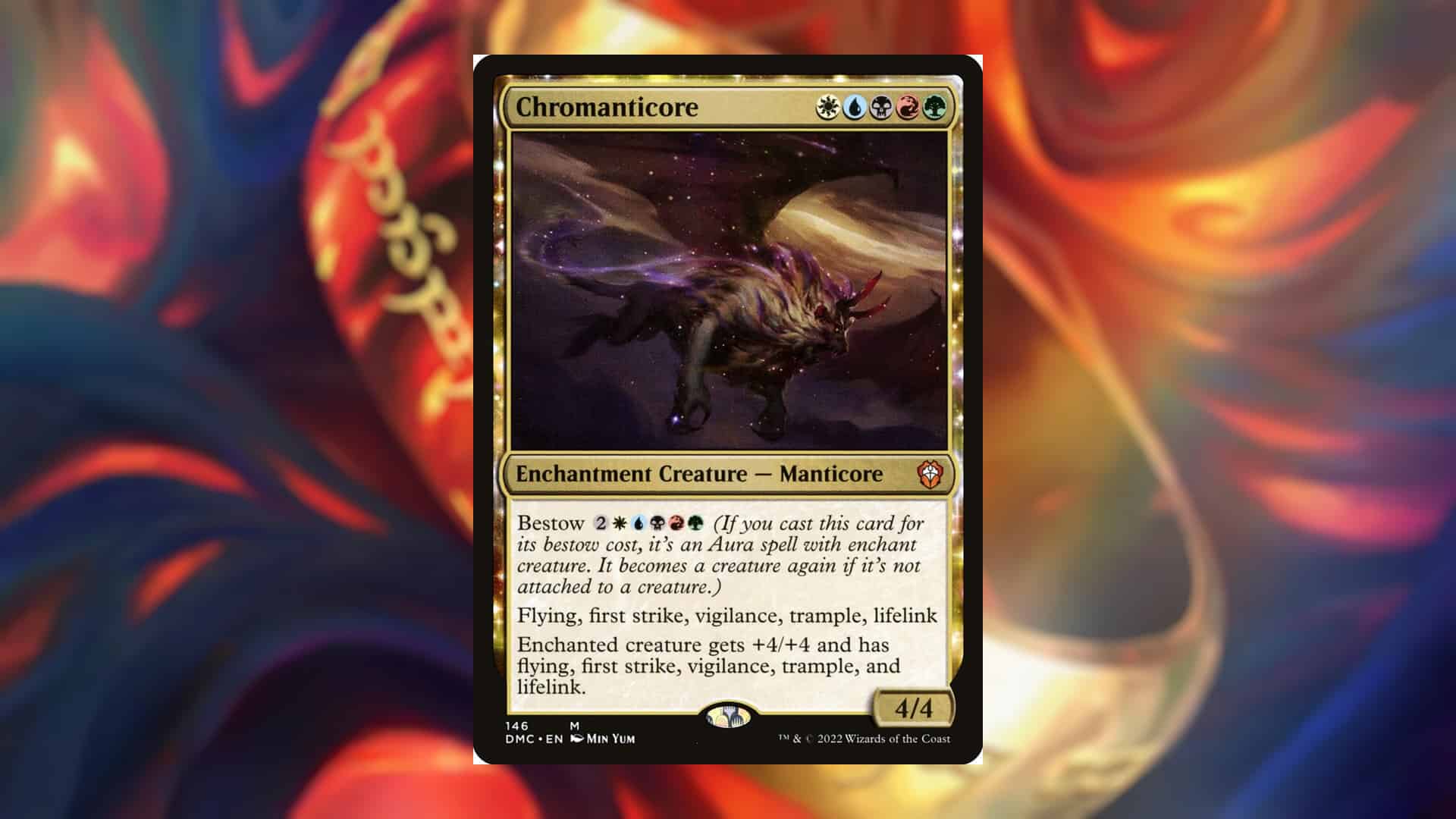Video Gamer is reader-supported. When you buy through links on our site, we may earn an affiliate commission. Prices subject to change. Learn more
Magic: the Gathering is one of the oldest and most storied trading card games in history. With 30 years of history, it’s safe to say that the game has gotten complex. But thankfully, Magic: the Gathering was built on a solid and easy to understand foundation. So today, we’re going to go through how to play Magic: the Gathering.
We’re going to talk through the rules that will apply to non-commander constructed formats. That’s what the baseline rules are created around. We’re going to also cover what formats you can play with these rules, and the rules for building a deck for these formats. There’s a lot of information to get through, so let’s get started.
What format should I start with in Magic: The Gathering?
If we’re talking about paper Magic, then we have a handful of very popular formats that you can dive into. These formats include:
- Standard
- Pioneer
- Modern
- Legacy
- Vintage
- Draft
- Sealed
- Commander
We’re going to focus on the first five, as those are the base line constructed formats that, but we’ll be covering the other three formats in other articles so be sure to stay tuned for those. So let’s first talk about building a deck for each of these formats.
Each format has their own card pool that you can use to build a deck. Standard has the least number of cards and is the only “rotating” format, meaning that periodically, the older sets and cards will leave the format when new ones come in. This happens roughly every two years. Vintage has the most cards available as you can use the entire Magic card pool, save a handful of cards.
Each format has their own Banned and Restricted list. Cards on these lists cannot be used in a deck for that format. For example, at the time of writing this Standard has four cards that are banned, which means they can’t be used in Standard decks, but they can be used in another format like Modern.
A great place to start is going to be Standard, since there are a lot less cards to worry about, and if you don’t want to plan on paper, you can play on Magic Arena. If you do want to go the Arena path, the consider checking out our best MTG Arena decks guide as well as our MTG Arena codes guide for a ton of freebies!
How do I build a Magic: the Gathering deck?

Next, decks in these formats are a minimum of 60 cards, and if you’re playing in a tournament, you’ll want to also include a 15 card sideboard. We’ll get to that a little bit later. There are certain cards that will increase the minimum deck size if you can meet certain conditions, though there are only a couple of them and not something to worry about at this point.
As for building a deck, you’ll want to have a mix of land cards and spell / creature cards. Depending on the kind of deck you’re playing, you’ll end up with a little more than 1/3 of your deck as lands. Additionally, there is a four copy rule. This means that unless stated on the card, you are limited to four copies of a card in your deck. This includes spell and creature cards, as well as land cards that do not have the “basic land” type.
How to I play a game of Magic: the Gathering?
Now that you have your deck built, it’s time to sit down and play. Matches in paper are typically played in best of three games. To start, you and your opponent will roll a die to determine who goes first. Once that has been decided, you’ll shuffle your main deck and present it to your opponent to shuffle or cut. Each player will start with 20 life, with the goal of getting your opponent’s life to zero.
Then, any “pre-game” actions are done. Mostly, this is if either player has a companion for their deck. Then both players will draw their opening hand of seven cards. This is where players will decide whether or not they wish to mulligan their hand. Starting with the first player, they will decide if they wish to mulligan.
If they decide to mulligan, they will shuffle their hand back into their deck and draw another seven cards. This will continue until they decide to keep their hand. Based on the number of times a player has mulligan their opening hand, they will then choose that many number of cards from the hand they keep and put those cards on the bottom of their deck. The player going second will also go through this process. Once both players have finished mulligans, the game begins.
Let’s quickly talk about the way a turn plays out in a game of Magic.
- Beginning Phase: This is the start of a turn. There are three steps to this phase.
- Untap Step: The player will untap (orient their cards vertically) all cards that can be untapped.
- Upkeep Step: A phase that resolves effects that happen at the start of the turn.
- Draw Step: Phase where a player draws their card for the turn.
- Main Phase I: This is the phase where a player a player can play lands and cast spells.
- Combat Phase: Combat is where a player can use creatures to attack their opponent. Combat is broken up into a few steps.
- Beginning of combat step: You are starting combat.
- Declare attackers step: The attacking player will choose any eligible creatures to attack and tap them declaring they are attacking.
- Declare blockers step: The defending player may choose any untapped creatures they control and assign them as blockers to any attacking creature.
- Damage step: Damage for each creature is calculated, and any creatures that fall to zero toughness are placed into the graveyard.
- End of combat step: Ending the combat phase.
- Main Phase II: A second main phase occurs after Combat. This is identical to the first Main Phase.
- End Phase: This is the end of the turn. Effects that last until the end of the turn will end here, and any damage on creatures that have lived combat will be removed during this phase.
Now back to our game. The player who goes first will skip their draw step, and proceed to their Main Phase I. Players will proceed through each of the steps outlined above going forward for the rest of the game until one player wins.
Now I mentioned that we were going to talk about sideboard cards earlier, well this is that time. Once the first game in a match has concluded, players will start side boarding. A sideboard is a separate pile of up to 15 cards that a player can use to swap cards in and out of their decks between games. Typically, players will take out cards from their main deck that don’t have a lot of usefulness for their match, and put in cards from their sideboard that do. More often than not, you’ll end up with 15 cards back in your sideboards after this process is complete, but you can simply add any number of the 15 cards to your deck at call it a day.
After sideboarding is complete, the same procedure will occur once more, but instead, the player who lost the first game will have the choice of going first or second. The game will repeat as the first game did. When that game is over, if one player won both games, then the match is finished. If each player has won one game, then both players may sideboard again, and play a third game to decide the match
The anatomy of a Magic card

Let’s next talk about the anatomy of a Magic card. There are a few important things to keep in mind when you’re building a deck and this information will be important for the next section. We’ve numbered the key areas that we’ll talk about.
- Card name
- Cards casting cost: Denoted by mana symbols and/or a number
- Card Type: There are six card types: Creature, Instant, Sorcery, Artifact, Enchantment, Land
- Subtype: Will tell you what kind of thing the card is. In this example, the artifact creature is a golem creature type. This is also used for Planeswalker cards, lands with basic land types, and tribal spells.
- Set Symbol and Rarity: Each card has a picture to tell you what set the card is from. Rarity is determined by the color of the symbol. Black is Common, gray is uncommon, gold is rare, and red is mythic rare.
- Text Box: This is where card effects and flavor text will be shown.
- Power and Toughness: This will show up on creatures only, but will show you how strong a creature is as well as how much damage it can take before it dies. In combat, if creature A is attacking and creature B is blocking, each creatures Power is dealt to the other creature’s Toughness.
Important Magic: the Gathering keywords

As you look through looking at your cards, you will come across a ton of ability keywords, and so we’ll quickly cover some of the more common ones that you’ll see.
- Instant: Instant is a type of spell, and can be cast at any point when you have priority, even on your opponent’s turn.
- Sorcery: Another type of spell. These kinds of spells can only be cast during your main phases, when you have priority and the stack is empty.
- Vigilance: Vigilance is a creature keyword. It means that a creature with Vigilance does not tap to attack.
- Trample: Trample is another creature keyword. Trample means when a creature assigns lethal combat damage to a blocking creature, any extra damage is dealt to the blocking creature’s controller.
- Summoning Sickness: Summoning Sickness is a rule of Magic, meaning a creature that was not on your battlefield at the start of your turn has summoning sickness. This creature cannot attack, or activate abilities if it has summoning sickness.
- Haste: Haste is another creature keyword that allows a creature to attack or use an activated ability even if it was just played.
- Deathtouch: Deathtouch is an ability on a creature that means at the creature only needs to deal one point of damage of it to be lethal to creatures.
- Lifelink: A creature with Lifelink will gain you life equal to the creature’s power when it deals damage.
- Flying: Flying is another creature ability. Creatures with Flying can only be blocked by creatures that either have Flying or Reach.
- Reach: A creature with Reach can block a creature with Flying.
- Tap: Tapping a card means that you’re orienting it horizontally. This means that a creature is attacking, or a card could be activating an ability. This is denoted by a curved right pointing arrow.
And that’s all there is to it folks! Rather, this is just scratching the surface, but now following this guide, you can pick up a deck and play a game of Magic: the Gathering. There are tons of other rules that have accumulated over the years, so if you’re interested in specific rules, be sure to check out Magic’s Comprehensive Rules.
